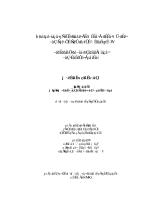| dc.description.abstract | Forage fish are small pelagic fish that are energy pathways from low to high trophic levels and their high stock biomass makes them a profitable target for large scale fisheries. An ecosystem-based approach to fisheries management (EBFM) is necessary if the objective is to maintain a functional ecosystem by avoiding disruption in the food-chain while ensuring profitable resource exploitation. The general objective of this study is to develop the base for such a fishery approach, linking forage fishes, (mainly herring, Clupea harengus, which is a key forage fish species), and baleen whales (fin, minke and humpback whale; Balenoptera physalus, Balenop-tera acutorostrata, Megaptera novaengliae ) in the Celtic Sea ecosystem. The spatial distribution of the annual Celtic Sea herring stock was analysed from acoustic survey data using geostatistics. Herring was randomly distributed in patches, influenced by coastal spawning grounds without correlation with temperature and salinity. Observed spatial distribution of baleen whales was fund to be influenced by the distribution of herring and sprat (Sprattus sprattus ) suggesting that baleen whales actively targeted these two species. To establish the transfer of energy between prey and predators, energy content of herring, sprat and mackerel (Scromber scombrus ) were first measured with bomb-calorimetry. Measures exhibited a high variation pattern caused by maturation status. A significant drop in energy content of fish after spawning is assumed to be an important factor for the quantification of the predation pressure on fish stocks. A simplified individual dynamic energy budget was combined with a model of whale behaviour, in order to quantify their predation on herring. Such modelling allows for testing of different scenarios regarding ecosystem functioning and can help understanding ecosystem links between predator and prey species | en |

